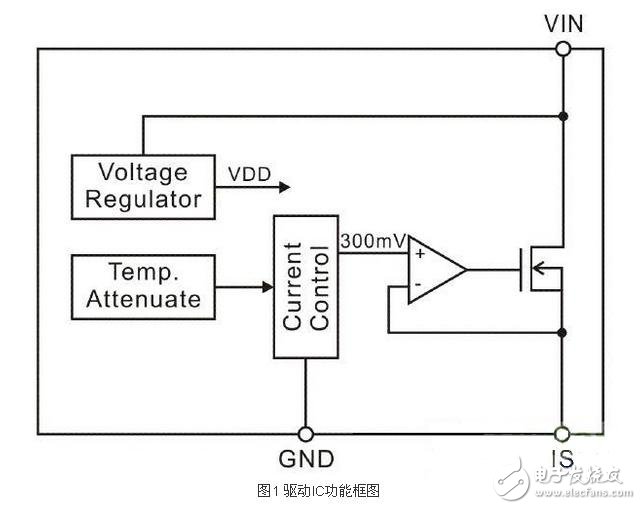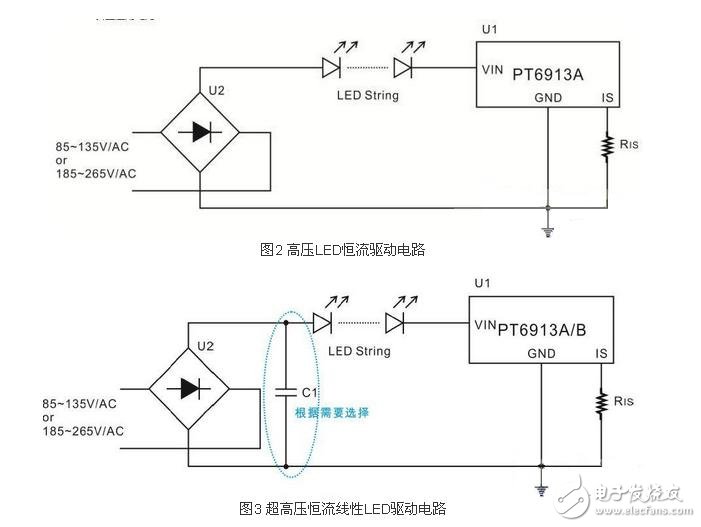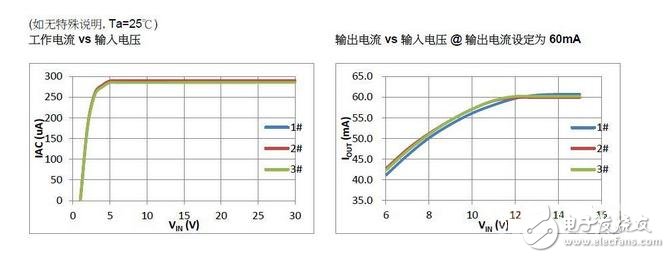Driver IC Introduction
The PT6913 chip uses linear constant current to control the output current. The internal integrated power MOS, the output current can be set to 10mA~60mA through the external resistor. The maximum input voltage of PT6913 can reach 400V, and the high-end driving mode is provided to provide LED open circuit and LED short circuit protection. In any case, the excess voltage of the input power supply higher than the LED load is tolerated by the PT6913, and the LED load does not face the overvoltage threat, which provides a very high reliability and stability for the overall solution.
In order to prevent overheating damage of the IC, the PT6913 integrates the temperature compensation function. When the internal junction temperature of the IC rises to 130 °C, the PT6913 starts to reduce the output current. When the junction temperature reaches 150 °C, the output current will decrease to 0. This can be avoided. The flicker problem of traditional over-temperature protection.
working principle
The PT6913A/B uses linear constant current drive technology, and the circuit topology is simple and practical. The LED load, the chip and the rectified power supply are connected in series to form a current loop, and the output current is set by the IC. When the input voltage is higher than the LED load voltage, the output current is constant, the input voltage exceeds the LED load voltage, and the IC is subjected to the IC. The maximum input voltage of the IC can reach 400V, which is suitable for most AC input applications.

Program characteristics
â—† 5V~400V working voltage
â—† 5~60mA can set output current
◆ ±5% output current accuracy
â—† Multiple ICs can be used in parallel to meet large current output
â—† High power factor
â—† High efficiency
â—† Very few external components
â—† No electrolytic capacitor required
â—† LED open circuit, short circuit protection
â—† Temperature attenuation function
◆ - TJ" 130 °C, the output current begins to decrease; - TJ" 150 ° C, the output current is reduced to 0
Temperature decay
The PT6913A/B integrates temperature decay. When the internal junction temperature of the IC is higher than 130 °C (typ.), the IS pin voltage is reduced by a factor of 15 mV/°C, and the output current is accordingly reduced. When the IC internal junction temperature reaches 150 ° C, the output current will be reduced to 0.
The temperature decay function effectively avoids flicker caused by traditional overheat protection. When the ambient temperature is abnormal and the IC junction temperature rises and reaches 130 °C, the PT6913A/B will attempt to reduce the LED heat generation by reducing the output current, thereby reducing the ambient temperature. The output current and ambient temperature will be balanced, which is different from the traditional overheat protection mechanism (for example, IC junction temperature reaches 150 ° C, IC is off, IC junction temperature drops 20 ° C, IC works again), thus avoiding LED flicker.
LED short circuit protection
PT6913A/B adopts linear constant current control mode. The excess voltage of the input voltage higher than the output voltage is tolerated by the IC. The IC input voltage can reach 400V. When some LEDs are short-circuited, the voltage that the IC will withstand will increase and the IC power consumption will increase. The IC temperature rises. If the IC internal junction temperature is still less than 130 °C, the output current will remain constant. The worst case is that the positive and negative terminals of the LED load are short-circuited. All input voltages are absorbed by the IC. The internal junction temperature of the IC will rise sharply to 150 °C, and the IC turns off the output. Obviously, LED short circuit protection is achieved by temperature decay.
Application range
â—† LED bulb
â—† LED tube
â—† Compact LED lighting products
Typical application circuit

Typical performance evaluation

Power Skiving,Skived Heatsink,Aluminum Heat Sink,Skived Fin Heat Sink
Dongguan Formal Precision Metal Parts Co,. Ltd , https://www.formalmetal.com